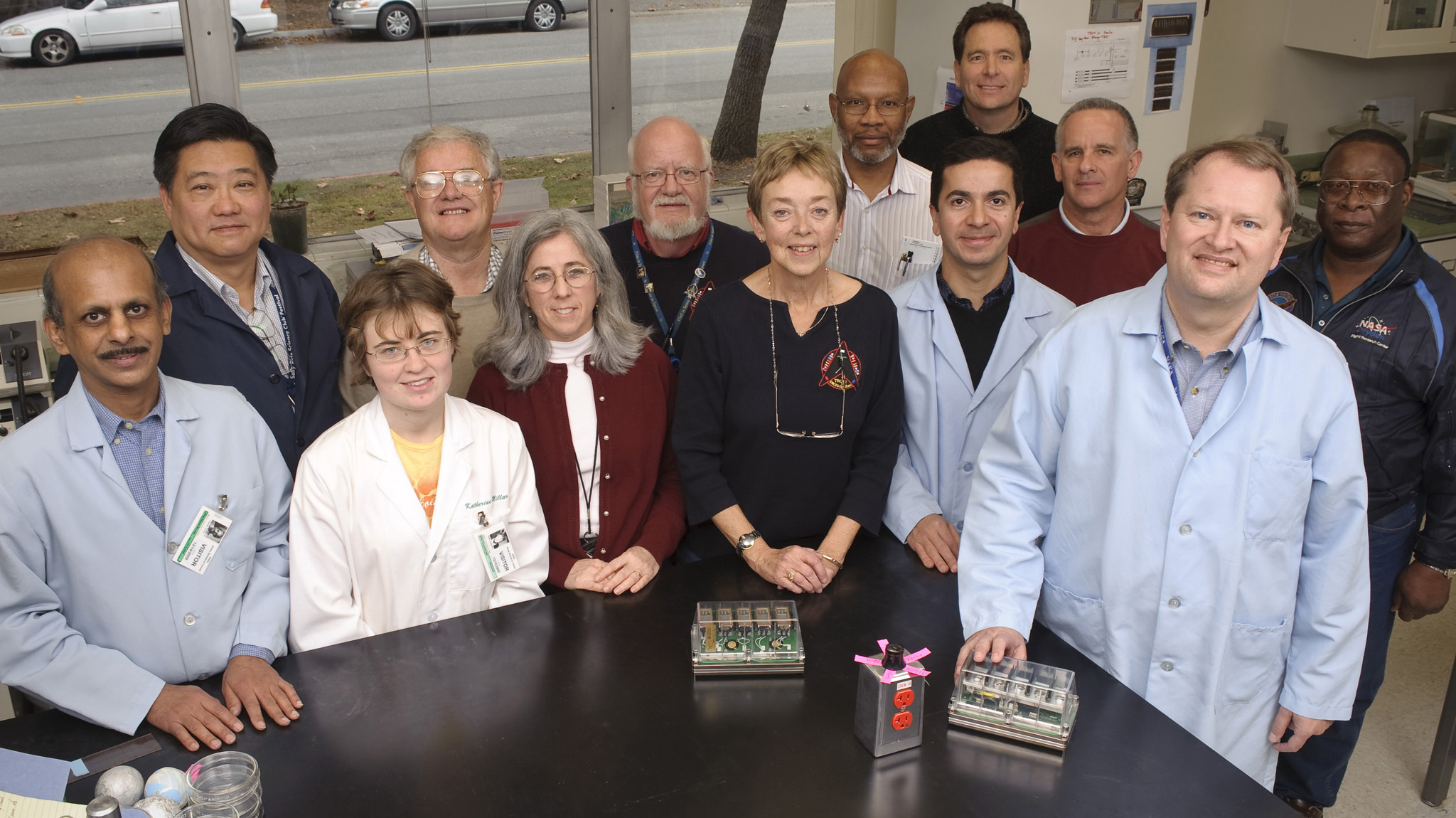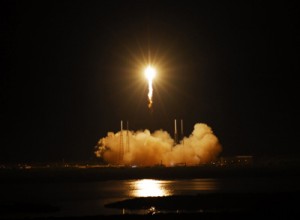
John Z. Kiss (right foreground), dean of the University of Mississippi Graduate School, stands with his hand on the experimental containers with seeds that will be launched on SpaceX2 for the Seedling Growth experiment on the ISS. Kiss is shown with the personnel at NASAâs Ames Research Center who are involved in the preparation of the space experiment.
OXFORD, Miss. – When NASA launches SpaceX-2 Friday (March 1) at Cape Canaveral, University of Mississippi Graduate School Dean John Z. Kiss will be there observing with great pleasure and high expectations.
That’s because Kiss’ seedling growth experiment will be onboard the vessel, which has the International Space Station as its destination. The launch is set for 9:10 a.m. (CST).
Kiss, also a professor of biology, is principal investigator on “Novel Explorations into the Interactions between Light and Gravity Sensing in Plants.” Part of the Fundamental Space Biology program at NASA, the program is designed to study light and gravity signaling in plants and their effects on cell growth and proliferation. It also has a strong relevance for improving crop species on Earth to obtain increased production and sustainability.
“We will be at Cape Canaveral Air Force Station in Florida for the launch,” Kiss said. “While we have known of the date for some time, the ‘formal’ announcement of the launch is a big milestone.”

The SpaceX Falcon 9 rocket soars into space from Space Launch Complex-40 on Cape Canaveral Air Force Station in Florida on May 22, 2012, carrying the Dragon capsule to orbit. Photo courtesy NASA/Alan Ault
Friday’s launch is the first phase of the four-part experiment. The next three launches are set for later in 2013, 2014 and 2015. In addition to Kiss’ and other experiments, SpaceX-2’s Dragon capsule will be filled with about 1,200 pounds of supplies for the space station crew.
On March 2, Expedition 34 Commander Kevin Ford and Flight Engineer Tom Marshburn of NASA will use the station’s robot arm to grapple Dragon following its rendezvous with the station. They will attach the Dragon to the Earth-facing port of the station’s Harmony module for a few weeks while astronauts unload cargo. They then will load experiment samples for return to Earth.
Dragon is scheduled to return to Earth on March 25 for a parachute-assisted splashdown in the Pacific Ocean off the coast of Baja California. It is to bring back more than 2,300 pounds of experiment samples and equipment.
“Since plants will be a necessary part of bioregenerative life support needed to send humans to Mars and beyond, the knowledge obtained from our space flight experiments will be critical for developing ways to effectively use plants in these life-support systems,” Kiss said.
Kiss is collaborating with F. Javier Medina of Centro de Investigaciones Biológicas in Madrid. UM post-doctoral researcher Kathy Milar and freshmen Neel Patel of Water Valley and Logan Williams of Collinsville, Tenn., are assisting Kiss. Private contractor SpaceX will launch the experiments.
The hypothesis of their research is that positive red-light sensing, which was known in older plant lineages, is masked by normal 1-g conditions in more recently evolved lineages. Through the experiment, the scientists aim to confirm and characterize the red-light-dependent phototropic response in flowering plants.
The experiment will be conducted with different genotypes of the model plant Arabidopsis thaliana in experimental containers placed in the European Modular Cultivation System, a large incubator that provides control over the atmosphere, lighting and humidity of growth chambers to study plant growth on the ISS. The experiment containers contain white, blue and red lights that can be controlled from the ground to expose the plants to different kinds of light.
“By using the two centrifuges in the EMCS, it is possible to carry out the experiment in microgravity and fractional gravity, along with the 1-g control, within the same space environment,” Kiss said. “Following a six-day time course in the EMCS, the samples will be either frozen or chemically fixed and returned to us. Additionally, images will be taken throughout the whole experiment and downloaded real time.”
Kiss has worked with NASA since 1987 and has served as principal investigator on six spaceflight projects on the space shuttle, the Russian space station Mir and the International Space Station. This project started in 2011 and was selected through an international competition by competitive peer-review panel and then by NASA.
Get more information about the Seedling Growth Experiment.